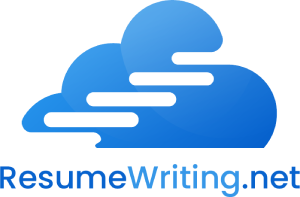It doesn’t matter what industry you’re targeting with your job applications. It’s competitive! Hundreds, sometimes thousands, of applicants compete for the same position. For hiring managers, it’s hard to keep track of everybody that applied. A manual system that would compare applicants would be difficult to create and maintain. That’s why they rely on an Applicant Tracking System (ATS). This tool makes it easier for HR managers to find candidates who are suitable for the next step of the hiring process. For job applicants, it makes the challenge of resume writing even more intimidating.
To create an adequate job application, you must first understand: what is an ATS friendly resume?
Let’s start by explaining what ATS is — it’s software that automates part of the recruitment process. It uses a variety of criteria to filter, scan, and rank resumes. Although the technology has its flaws, it has been improved over the last decade. It also created serious challenges for job hunters. They must try hard for their resume to be seen by human eyes in the first place.
How the Applicant Tracking System Works
Before the ATS came around, the entire recruitment process was operated by the human resources staff. Job openings were posted in newspapers, and hard-copy applications were accepted. With the evolution of the Internet, online application forms led to more organized, digitized procedures.
Online job boards led to a flood of applications, so the traditional methods of manual sorting no longer worked. The early versions of ATS were simple. They mainly focused on keyword matching and basic sorting. But with time, they became more sophisticated. Today, they use complex algorithms and features that rank candidates and resumes. They also integrate with other HR tools. A huge percentage of companies use ATS to efficiently manage their recruitment efforts.
Here’s how the system works: it scans a received resume, breaking it down into standardized fields. The categorization is set by the employer, and it usually includes the name, contact information, work experience, education, and skills.
Then, the software compares the resume’s content against the job description. That’s when keywords matter. But it’s not just about words; it’s also about phrases and job titles. These key phrases are often related to the qualifications and skills that were mentioned in the job posting. The resumes that closely match the criteria are ranked higher, and those are the first ones that hiring managers get to see. Those candidates are more likely to get a further review and an invitation for an interview.
Many employers go beyond keywords and phrases. They also set up the ATS to evaluate the candidate’s experience, the presence of required employment certifications, and even the document’s structure. They also set up the system to reject resumes that don’t meet basic qualifications, such as location or required education.
Why Are ATS Resumes Necessary?
— Because employers say so.
That reason is good enough for most job seekers, but let’s explain a bit further. HR departments use ATS because it’s efficient. They receive a huge volume of applications for each job posting. Manual reviewing isn’t impossible, but it surely is an overwhelming task. Thanks to ATS, recruiters can quickly filter out candidates who don’t qualify. They pay attention only to the most relevant resumes, so they quickly get to the next stage of the hiring process.
From an employer’s viewpoint, ATS has important benefits:
● It ensures that the evaluation is consistent. All resumes face the same criteria, so the potential for bias is reduced during the initial screening process.
● ATS systems are not just about evaluation. They also store resumes and candidate data in a centralized database. With that, it’s easier for recruiters to target relevant applicants later on. They can schedule interviews and manage the communication within the same system.
● Modern ATS platforms integrate with background check services, onboarding systems, employee management software, and other HR tools.
What Is an ATS Compliant Resume and What Makes It Special?
Now that we understand what ATS is, we can focus on the candidate’s point of view: how can you target it?
This isn’t a special type of resume, like the federal or military resumes are. An ATS resume is just a usual resume, but it’s specifically designed to be processed by software. When writing a traditional resume, you’re focused on visual appeal and creativity. With an ATS resume, those aspects are less important. This job application document is optimized for machine readability. It’s meant to pass through the automated screening process.
For a traditional resume, you might design elaborate graphics and opt for non-standard formatting. It’s a good way to differ from the rest and catch the recruiter’s eye. But with the implementation of ATS, such complexity works against you. Unconventional fonts and “creative” layouts are a big NO.
What Is an ATS Optimized Resume? All About Its Features
Each ATS-optimized resume is a story of its own. It has to be tailored according to the job posting and your needs as a job seeker. But there are universal features that all these resumes have:
Keyword optimization
When we say keyword optimization, we’re not talking about the dry texts that lack personality, which you’ve read online so many times before. We’re talking about keywords in a resume, which are meant to tell the ATS that your application is relevant to the particular job posting.
What keywords should the resume include? It’s important to analyze the job posting and identify the phrases that are relevant to the opening. They should be naturally incorporated into the resume. Remember: humans will still read it, so you mustn’t make it look like it was written for software. Pay attention to the work experience, skills, and resume summary sections. Those are the parts where keywords can be naturally included.
For example, the job description may mention project management, data analysis, and cross-functional team leadership. The employers will want to detect those exact phrases through the ATS, so you should use them in the resume where applicable.
But be careful! Keyword optimization can backfire. It’s more than just inserting terms for the sake of being detected by the ATS. You must use those keywords in context. In fact, that’s the number one reason why most job applicants hire a pro to write them a resume: although they are aware of the importance of keywords, they don’t know how to use them naturally. Stuffing the resume with keywords without expressing real experience or skills won’t get you that job.
Basic formatting
Applicant tracking systems are designed to scan text. They don’t pay attention to images or graphics. That’s why you should follow a simple rule: keep the formatting simple and clean when creating ATS-optimized resumes. Graphics, tables, complex design, and unusual fonts can confuse the system. They could lead to errors in the way your resume is processed, so it could be entirely discarded.
Follow these simple tips to keep the formatting clean:
● Use standard fonts that are easy to read: Arial, Calibri, or Times New Roman are the usual choices. Don’t get “artsy” with the font!
● Avoid creative symbols when writing lists. Simple bullet points are good enough.
● Don’t try to come up with creative names for the headings. They should be conventional: Work Experience, Education, Skills, and so on.
● Keep the margins and spacing consistent throughout the resume.
Standardized Headings
They may be too conventional and boring. They may make your resume look similar to what employers have seen hundreds of times before. But here’s the secret: employers are not always in the mood for something creative. They want to evaluate you as quickly as possible. A standardized resume enables them to do so. Plus, standardized headings are important for the ATS to accurately scan your resume.
The system will look for familiar headings to categorize and process your information. If you use creative or unconventional phrases, the system may not identify them, so important details will get overlooked.
Career Milestones seems like a better option than Work Experience? Don’t! Make your resume as easy as possible for the system to understand, so stick with the usual phrases.
Widely Accepted File Formats
An ATS resume’s format will impact the way it’s being processed by software. The most commonly accepted formats are:
● .docx — It’s a safe format to use, since it’s compatible with most systems. It makes the content easily readable for software.
● .pdf — Most systems can handle it, but older ones might struggle with it, especially if it includes images or unusual fonts. If you submit a PDF, make sure it’s as simple as it gets, and only use text.
● .txt — It’s universally readable by software, since it strips away all formatting. BUT! It will make your resume look unprofessional and plain when it gets to human eyes.
Formats like .jpg, .png, or .odt should be completely avoided. So if you plan your resume to be readable for applicant tracking systems, don’t turn it into an infographic!
Why Should Job Applicants Use ATS-Optimized Resumes?
We explained what advantage the employer gets: they simplify the hiring process. But as a job applicant, you’ll also benefit from an ATS-friendly resume:
● It gives you a better chance to get noticed. If you use the right keywords and structure, the system will rank your resume higher and flag it for further review. With that, you get a chance to get seen by hiring managers.
● It takes a little time and effort to adapt a single ATS-compatible resume to several job listings. You’ll add some keywords that were mentioned in another listing, and you’re done. Of course; we’re talking about a situation when you’re applying for several similar jobs. Even if you need to reframe your resume, you can quickly modify it without worrying about complex design elements.
● You can use a simple file format with simple content. There’s no need to try hard to be creative. You just need to be factual.
Reasons to Hire a Professional Writer to Write Your ATS Resume
When you know what you’re doing, an ATS resume isn’t that difficult to write. But it does require specific skills and knowledge that most job candidates don’t have. Not all of us have been trained how to write cool resumes, and that’s OK. Hiring a professional writer has many advantages:
● We’re talking about experts here. Professional writers know how ATS technology works. They understand keyword optimization, proper formatting, and file selection. They have been trained and they have the needed experience to know what resume can pass through the system.
● They know how to use the right keywords in a contextual way. The resume will be optimized for machine reading, but it will also be good for the hiring manager when they get to read it.
● The resume will still stand out. Professional writers know how to balance all requirements. They can create content that highlights your unique qualifications and achievements in the format required by applicant tracking software.
● A professional writer will craft your resume for the specific job and industry. That’s especially beneficial if you’re applying for multiple openings in the same industry. You can easily tweak the resume to fit them all.
● By hiring a pro writer, you’ll save time. Resume writing is definitely a time-consuming and stressful process. It requires attention to detail, knowledge of current hiring practices, and advanced writing skills. If your schedule is busy and you can’t handle the stress, hiring a writer will make a big difference.
● Professional writers give you an objective perspective. They help you identify the strengths and achievements that are relevant for the opening. They might suggest ways to address some career gaps or overcome other weak aspects of your resume.
Throughout your career progress, it’s important to know when to delegate and outsource. If you can’t handle the resume writing process right now, you can be more efficient by hiring a professional writer who knows what to do. You’ll get a perfectly balanced resume that works for both ATS and hiring managers.


